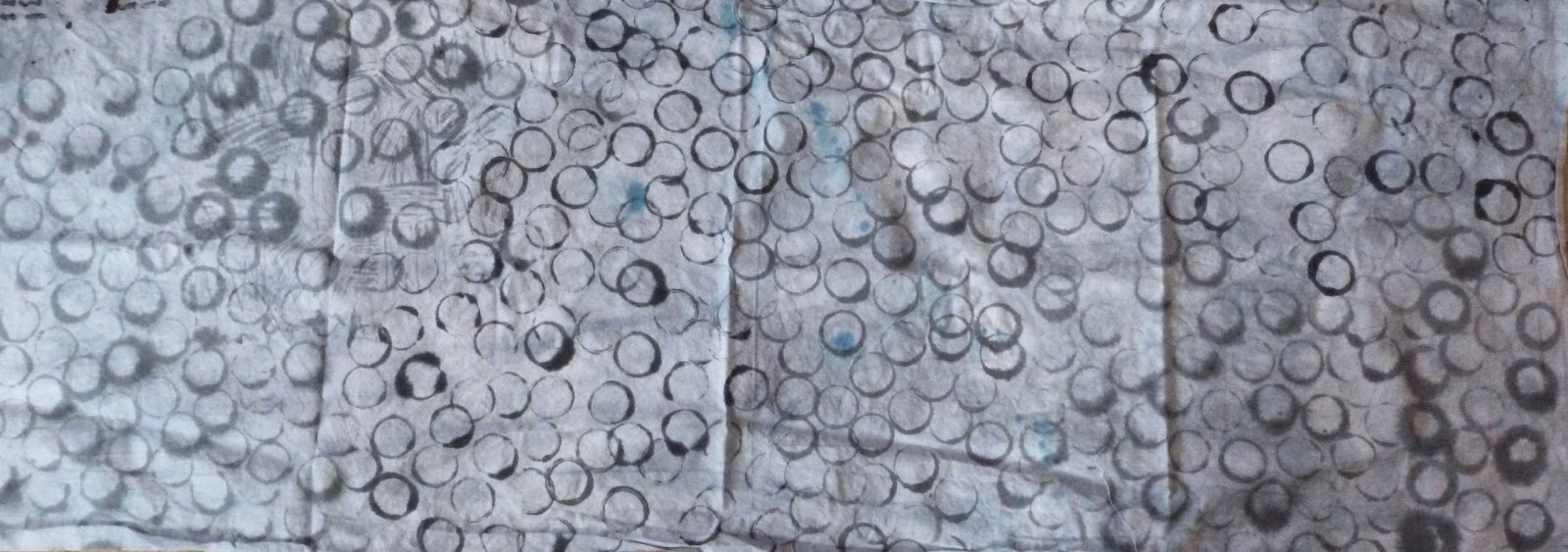I love working at a University so that I can take free classes. This semester I am taking an art class named "Color and Light." I thought I knew colors but I am learning a lot. And now I am taking you on the journey.
Lesson one: DYE COLORS
Let me start with the dye colors. Do you ever get confused about which
blue, yellow, or red to buy? I know that I did. And then the zillions
of colors that you can spend your money on. Which ones are fabulous and
which ones will sit on your shelf? And how many of them do I need? Ann
gave me some valuable clues.
Did you know there are only 14 pure MX Procion Dyes? At first I thought
that meant "pure" like you use the term for colors on a color wheel. I
was expecting a color wheel full range of colors.
Not quite. The MX pure dyes are those made from one substance. ALL of
the other colors are mixtures of the pure dyes. You will notice when
you see the list that there are 4 yellows, 1 orange, 2 reds, 2 purples
(neither of which is called purple), 5 blues and NO green.
So the answer to which colors are necessary is 14. All other colors are
mixtures of these 14. Now that doesn't mean not to ever buy any other
colors. I love Chartreuse and find it more practical to buy it mixed
than to mix it each time. You might have favorite mixed colors that you
want to keep buying. But do start your buying with the 14 pure colors.
Here is the list of the pure colors from Prochem.
You can order similar ones from Dharma but Prochem was nice enough to
post a list. I was going to copy and paste the list here but it copies
poorly. You will have to use the link to read the colors. The list
from the Prochem site does print very nicely.
My first step when I learned that fact was to go through my dyes and
find out which ones of the pure dyes I had and then order the rest. I
won't bore you with how many OTHER reds, greens, oranges, pinks, etc I
had.
My next step was to go to the store and buy containers to mix and store
my dye concentrates in. I dye often enough that I can store some dyes
already mixed with water (NOT soda ash water) in the fridge without
worrying about the dye's losing their strength. Now when ever I want to
dye, I don't have to hunt down my mask to mix the dye powders! One
messy step already accomplished! The dye concentrate recipe is: 1
Tablespoon of dye powder/ 2 Tablespoons Urea/ enough water to make 1 cup
of concentrate. Shake.
Just a note: I wish that I had a separate fridge for all my dyes
but I don't. I store my dyes in the same fridge with my food. The
mixed dyes are clearly labeled, in similar containers, that container
shape is not used for anything else but dyes, and they are in a
designated location in the fridge. With those rules I don't worry about
my husband and me mistaking the grape dye for grape juice. But I
don't have kids at home anymore either. If you have kids, you might
think about how to handle that problem before storing your dyes.
My next project is to develop a color wheel of the pure dyes. That will help me decide which of the 4 yellows and 5 blues I want to mix together to get green.
Note: Part of this post was taken from my post on
And Then We Set It On Fire.



























